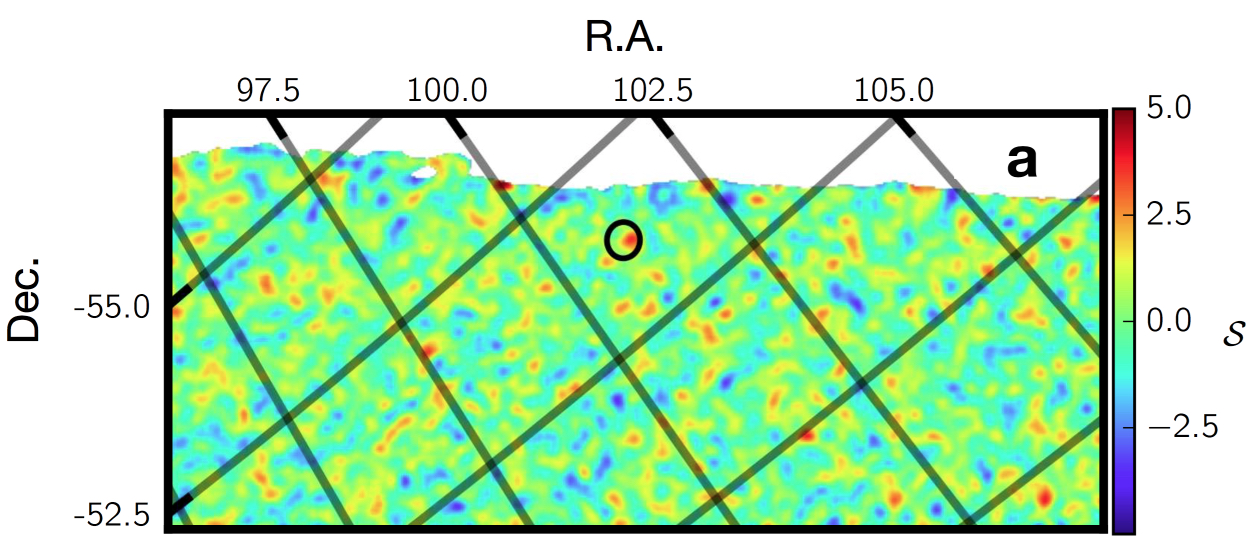
 Credit: DeLaunay et al., 2016, ApJ, 832 L1
Credit: DeLaunay et al., 2016, ApJ, 832 L1
GR/FRB?
Mysterious, powerful, quick signals from deep space are currently puzzling astronomers around the world. These "Fast Radio Bursts" (FRBs), ultra-powerful outpouring of radio emission lasting for a fraction of a second, were discovered in 2007 by researchers combing through archived data obtained by the Parkes radio telescope. Hidden in the Parkes data, some unknown source was seen which apparently emitted, for a fraction of a second, more power than 500 million suns. Recent radio observations suggest that these extreme outbursts are fairly common. Because these transients are so short, it's been extremely difficult to conclusively pinpoint the nature of these events. Suggestions include powerful emission from highly magnetized neutron stars called magnetars, the collision of neutron stars, or perhaps some entirely new physical phenomena. In order to determine what these radio bursts actually are, astronomers are diligently searching for counterparts at other energies. And now the first candidate counterpart to a fast radio burst has been found, by astronomers who combed through the available archive of gamma-ray data to determine if any transient gamma-ray source appeared near in time and space to a Fast Radio Burst. The image above is an image of a portion of the gamma-ray sky seen by the Burst Alert Telescope (BAT) on the Swift spacecraft observatory. After careful analysis, astronomers detected a weak source in the BAT data, shown in the black circle above, which occurred close to a Fast Radio Burst, FRB131104 (which was detected on November 4, 2013). If this gamma-ray source is really associated with FRB131104, then the total amount of energy actually released by this burst is more than a billion times higher than previously believed. This would have a major implication on constraining the nature of these FRBs, but it's not clear, at this point, whether this would help resolve the puzzle or deepen the mystery.
Published: November 28, 2016
<
HEA Dictionary ● Archive
● Search HEAPOW
● Other Languages
● HEAPOW on Facebook
● Download all Images
● Education ● HEAD
>

Each week the HEASARC
brings you new, exciting and beautiful images from X-ray and Gamma ray
astronomy. Check back each week and be sure to check out the HEAPOW archive!
Page Author: Dr. Michael F. Corcoran
Last modified Tuesday, 27-Feb-2024 10:15:13 EST


